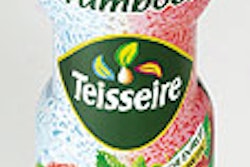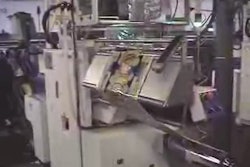Just as we’ve witnessed our end-user reader companies growing in size due to acquisitions, it appears that suppliers of equipment are being asked to demonstrate their breadth of resources in order to be seriously considered by the purchasing departments of the behemoth end users.
Or as one supplier at interpack told me, “the big boys want to hunt with other big boys.” I could be wrong but I think the new conception of “big” represents two major features that most large companies have that most smaller companies don’t: extensive resources and fear of failure.
A primary reason why large companies like to deal with other large companies is that they like to spread or share the risk of a project going bad with its supplier. First off, the risk is reduced when the supplier has the investment capability to continue a project long after smaller companies would have had to “cry uncle” and withdraw. It’s comforting to know that a partner won’t be “running on fumes” if it’s asked to work longer or assign more people to a project that’s still incomplete. That’s the investment part of the equation.
Probably of lesser importance is the fear of failure. The larger the company—and this is true for end users and suppliers too—the more reputation and ego that must be protected. For a smaller supplier, being associated with a project that didn’t quite work out is not a big issue; in fact, there’s a likelihood there will be several that fit that description over the years.
To a large company, being linked to a packaging project that didn’t measure up can be very damaging. And that’s precisely because the large supplier should have had the resources—the money, the people, the technology—to overcome whatever obstacle stood in the way of success.
On several occasions at interpack, machinery manufacturers told me how they needed to present a company image to the marketplace that would register on some of those all-important “radar screens” that end users, bankers, venture capitalists and others seem to be staring at.
Consolidation among suppliers is not a new phenomenon, any more than it’s new among end users. But in a couple of instances within packaging, the consolidators, the parent companies, had elected to stay far in the background, letting the individual companies project their public images. After all, the individual companies with their particular strengths were what their customers and prospective customers needed to learn about, not the headquarters group that conducts the back-office functions.
Well, those individual supplier companies were rarely if ever on the radar screens of some of the companies they hoped to sell to or borrow from or partner with. So, now, these quiet consolidators are having to, “step out of the shadows” so that the companies they hope to work with will recognize them as formidable companies in their totality.
That’s okay, I guess, although I know some of the people involved would have preferred to remain in the background. While I can understand the reasoning of large end users that want to do more business with larger suppliers, I wonder if this is simply a safer, more conservative option for purchasing.
We’ve been watching as the purchasing function at many manufacturers has been victimized by some companies desire to eliminate “headcount,” and some of the special functions of a purchasing executive are now performed by others in the company. Identifying sources of supply for various packaging materials and machinery was a job that usually the purchasing department could do well, sometimes even better than full-time packaging people.
Today, however, if the people looking at potential suppliers and partners rely only on those virtual “radar screens,” these individuals will miss out on a lot of great ideas and fascinating technology—not to mention many companies with their growth ahead of them rather than behind them.
See an archive of Arnie Orloski's Pipeline columns at www.packworld.com/pipeline.
Arnie can be reached at [email protected]

























